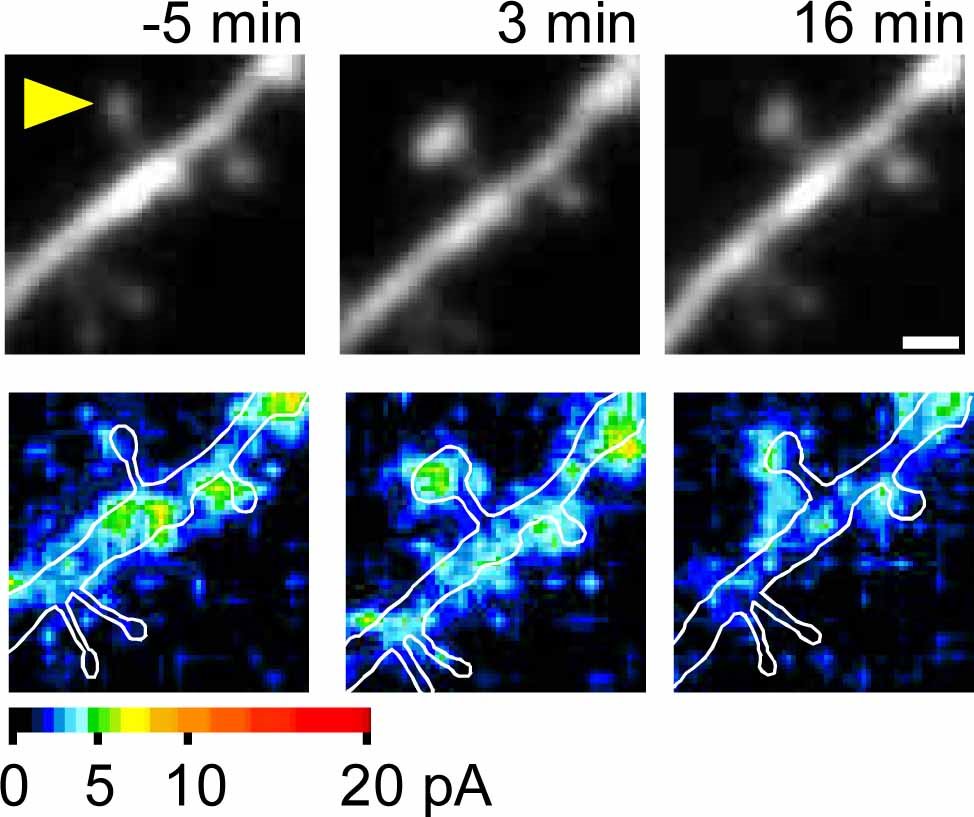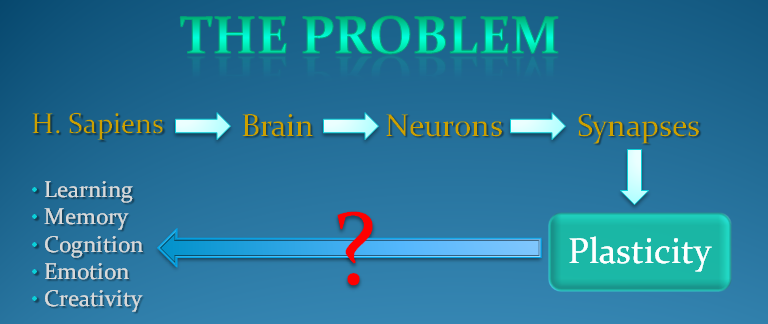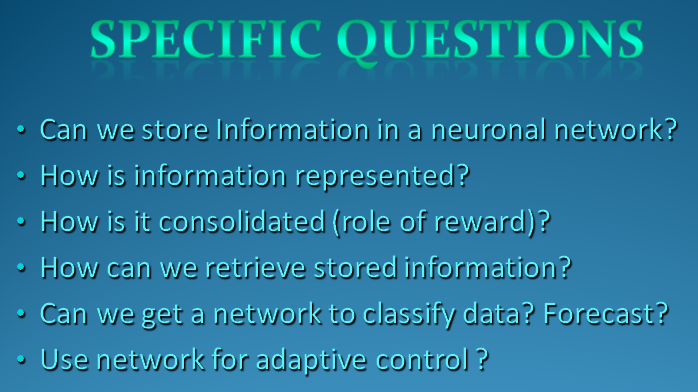Systems Biology of Learning and Memory

|
H. Sapiens displays many high level behaviors: * Learning * Memory * Cognition * Emotion * Creativity |
|||

|
These behaviors are generated by: The Brain |
|||
|
|
The brain consists of:
Neurons
which communicate through connections called: |
|||
 |
Synapses (Synapses mediate communication between neurons. An action potential generated by the pre-synaptic neuron arrives at a synaptic terminal, where it causes a brief release of a neurotransmitter, which diffuses across the synaptic cleft and binds to a receptor in the post-synaptic membrane. The resulting change in local membrane potential affects the excitability of the post-synaptic neuron). |
|||
 |
Synapses are "plastic": their structure and function depends on the recent history of previous activity. LTP (Long Term Potentiation): a long-lasting increase in synaptic strength caused be brief period of high-frequency input. LTP is the main cellular/molecular paradigm for learning and memory. |
|||
 |
||||
| Problem: explain high-level brain functionality (generating 'behavior') in terms of the well-known cellular & molecular properties of neurons and synapses, and their plasticity | ||||
 |
||||
|
Neuronal Networks: a critical link for connecting brain function to neuronal plasticity. Problem #1: How do neuronal networks employ neuronal and synaptic plasticity to generate appropriate 'systems levels' functionality? Problem #2: How does a complex hierarchy of neuronal networks generate high level brain functionality? We are currently addressing Problem #1
|
||||
 |
||||
 Go to Results |
||||